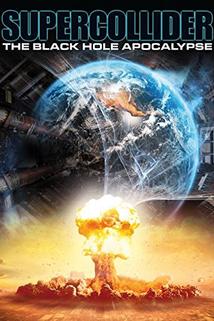

Yet that’s just what the recently updated European strategy for particle physics has recommended.
#Supercollider europe full#
With CERN’s Large Hadron Collider in full swing and scheduled to run into the late 2030s, now might seem a strange time to be planning a new supercollider for Europe. In this case, Supercollider (another name for the LHC) should be. The others were Zulfikar Abbany of Deutsche Welle, Ursula Bassler of the CERN Council, Jeremy Farrar of the Wellcome Trust and Beate Heinemann of DESY. This comic refers to the first startup (turn on) of CERNs Large Hadron Collider (LHC). Fermilab Director Nigel Lockyer was one of the panelists. 2, the Falling Walls Foundation hosted an online panel titled “Falling Walls Circle Table: The Next Big Machine – Does CERN Need Another Supercollider?”Ī video of the hour-long panel discussion is now available online. But CERN, the European Organization for Nuclear Research behind the collider, is planning to build a second, even larger collider.

Such a collider would not be built for achieving specific goals, however, as has been the case with other colliders in the past-instead, it would be used to conduct experiments meant to test various theories that seek to explain the nature of the universe.On Nov. The project also calls for a second stage that would entail dismantling the collider at some distant time and building a proton-proton collider in its place. Also, research efforts would have to be developed and launched to design and build the hardware needed for the project. The Stanford Linear Accelerator, SLAC, became operational in 1966, accelerating electrons to 30 GeV in a 3 km long waveguide, buried in a tunnel and powered by hundreds of large klystrons. Once that happens, the funds for the project would have to be made available by participating countries in Europe and the U.K.-and this time, perhaps, from other countries such as the U.S., China or Japan. The Proton Synchrotron, built at CERN (1959), was the first major European particle accelerator and generally similar to the AGS. If the feasibility study and financial estimates work out as hoped, the next step would be actual approval for the project to move forward. The next step will involve figuring out where to dig the new tunnel and whether it will be possible to do so in the area near the LHC. The approval by the CERN council was not an official go-ahead for the project-it was a go-ahead to look into its feasibility. Initial estimates suggest it would cost approximately €21 billion. The plan calls for first building a collider by 2040 that would smash electrons into their antimatter partners, called positrons, allowing for closer study of the Higgs and possibly dark matter. Several ideas have been put forth, but they are now all moot except for the 100-kilometer plan-it calls for building the collider around the city of Geneva, intersecting the LHC at two points. Even as the team at CERN was reporting evidence of the Higgs boson, back in 2012, plans for a new, larger super collider were being proposed.


 0 kommentar(er)
0 kommentar(er)
